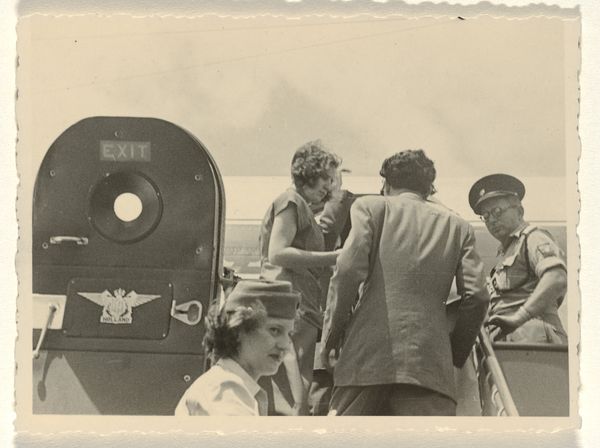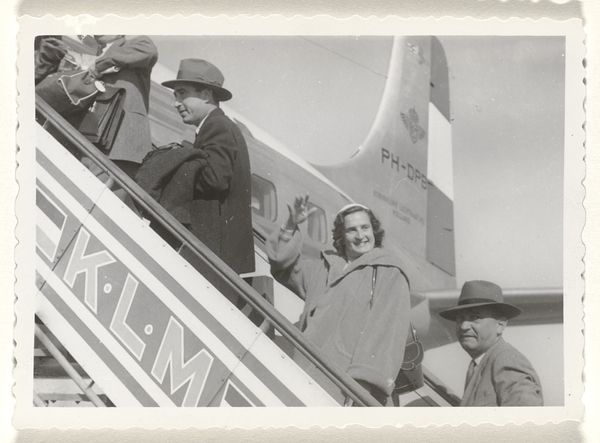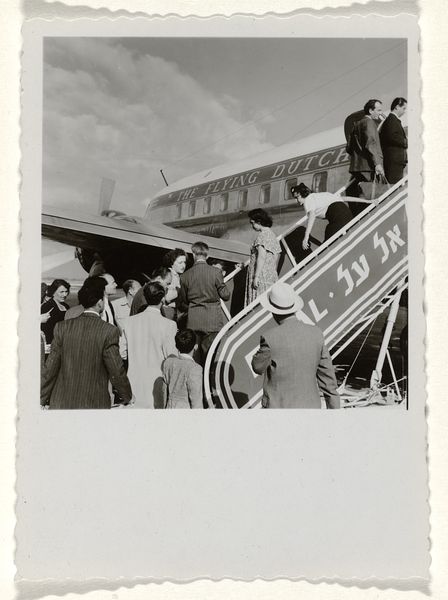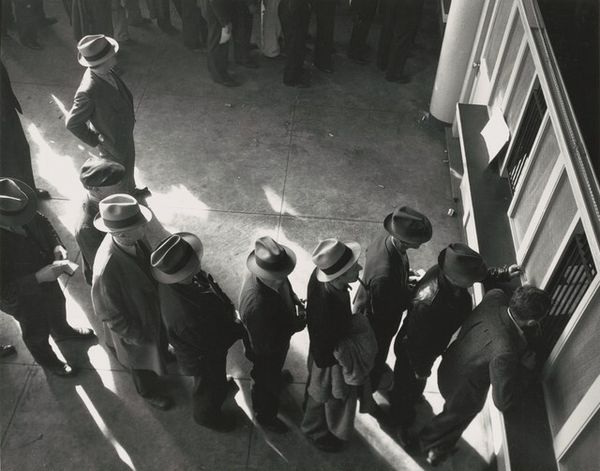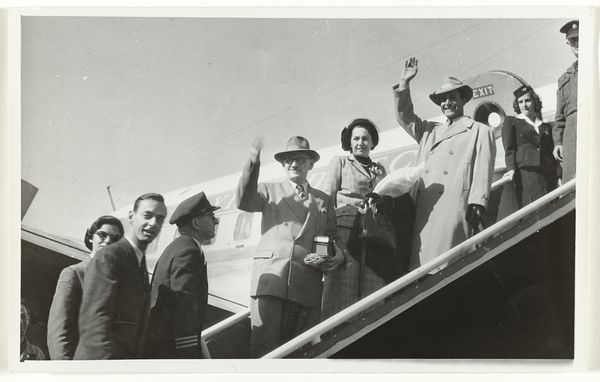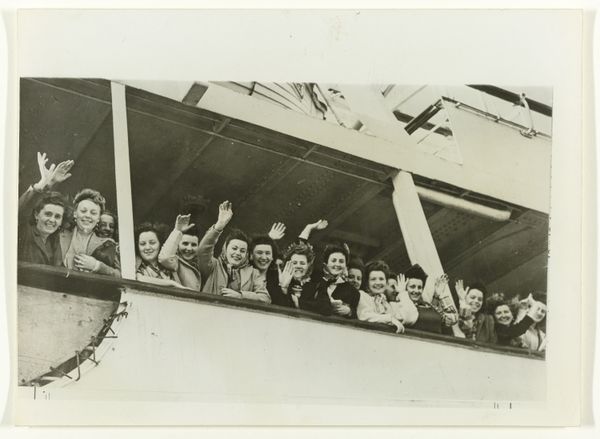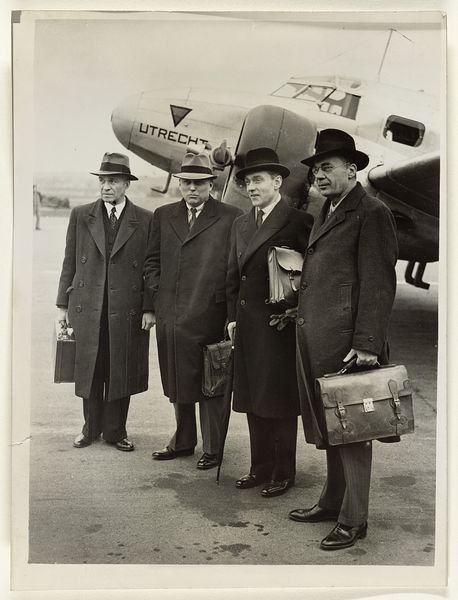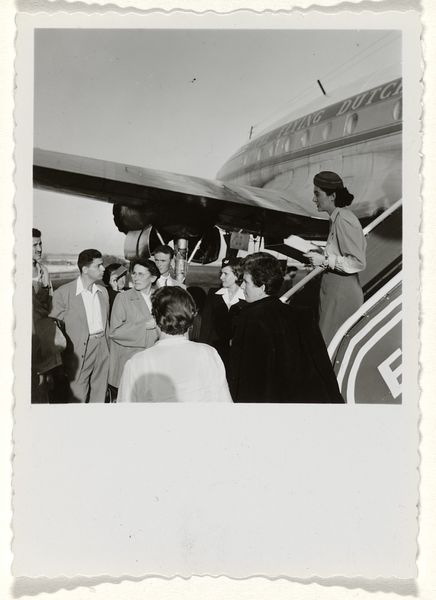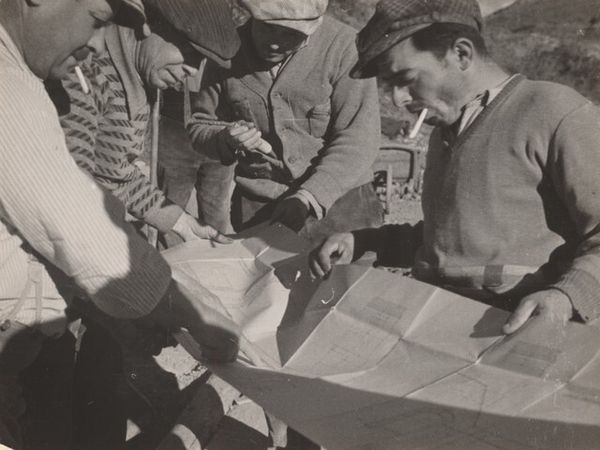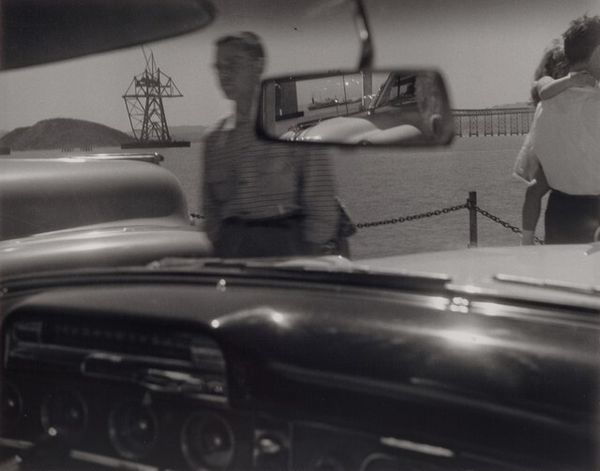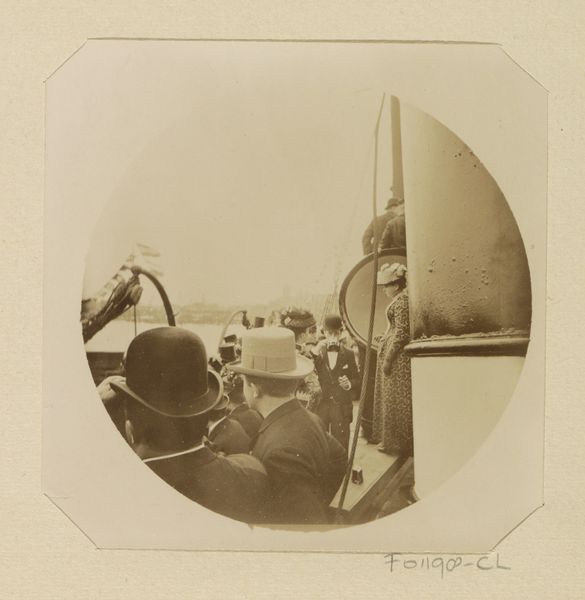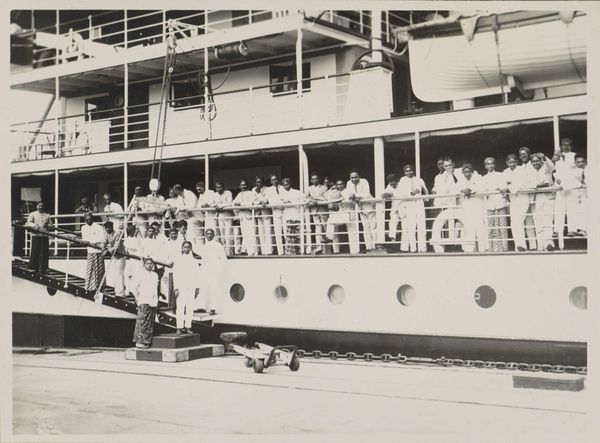
Isabel Wachenheimer in het uniform van de KLM met collega's van de KLM, staande op de toegangstrap van het KLM-toestel The Flying Dutchman 1947 - 1955
0:00
0:00
photography, gelatin-silver-print
#
portrait
#
dutch-golden-age
#
photography
#
historical photography
#
group-portraits
#
gelatin-silver-print
#
realism
Dimensions: height 95 mm, width 140 mm
Copyright: Rijks Museum: Open Domain
Editor: This is a gelatin-silver print photograph titled "Isabel Wachenheimer in het uniform van de KLM met collega's van de KLM, staande op de toegangstrap van het KLM-toestel The Flying Dutchman," taken sometime between 1947 and 1955. There's something really striking about this group portrait, the way it captures this post-war optimism of air travel, but with a definite formality. What catches your eye, looking at this photograph? Curator: What I see here is a carefully constructed image designed to project a certain image of the KLM during the postwar period. Note how they're positioned on the airstair, it acts almost like a stage, elevating them. What message do you think the airline wanted to send to the public through an image like this? Editor: I guess they're trying to show how professional and modern they were at the time. Air travel was really taking off, right? So this could be a way to establish their reputation. But how much of that image is carefully managed? Curator: Precisely! Think about who is included, the crisp uniforms, even the name "The Flying Dutchman"—a romantic, yet decidedly Dutch symbol. This photo is an advertisement for KLM, selling not just travel, but also national pride and a certain sophisticated lifestyle available to a select few in the post-war era. It's a great example of how corporations consciously cultivate public image. Editor: So, it's more than just a simple group photo. It's communicating specific values. Do you think audiences at the time understood all those layers? Curator: Consciously? Maybe not all of them. But they certainly felt it. Images like these were designed to appeal to aspirations, subtly shaping desires. Consider the rise of consumer culture after the war; this is one small piece of that larger picture. Editor: Wow, I'm definitely looking at it in a totally different way now. It makes me realize how powerful a simple photograph can be in shaping public perception! Curator: Exactly! It’s about understanding how historical context and cultural forces shape both the creation and consumption of art, even something as seemingly straightforward as an advertisement.
Comments
No comments
Be the first to comment and join the conversation on the ultimate creative platform.

